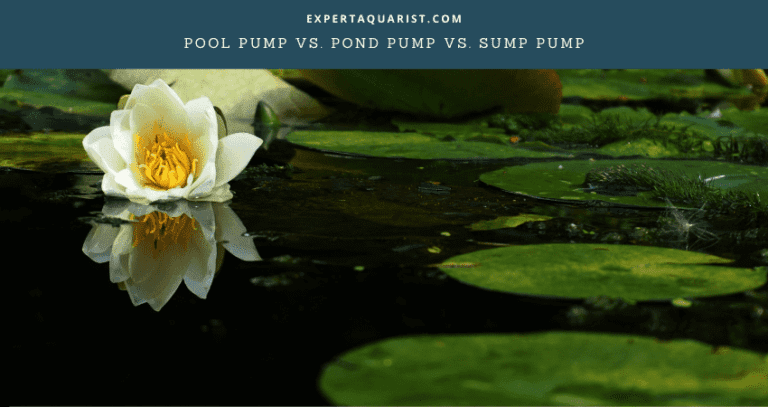For a fish pond in your backyard, there is no alternative to keeping your pond healthy and clean. To achieve that, you can either buy a commercial filter system or save money by making one yourself.
DIY sand water filters are super easy to build. You have to drill the vessel properly, add some fittings and an air manifold into it then layer it carefully; when all of that is done, adding a pump will make your filter ready for action.
I’ll be offering you a step-by-step guide on how to make a sand filter for fish pond to help you out. So, stay with me for an amazingly cost-effective way to keep your pond water clean.
Process of making a Sand filter for fish pond: 5 Simple Steps
Having a sand filter around is helpful for your pond. And, by making one on your own, you’ll get a water filtering system that is 100% made out of your own preference. The size, the media type, etc. everything will be your call.

I think having that kind of customization choice is what makes working with ponds so fun. One of the best DIY water filters is a gravel and sand filter. And that’s what I recommend as well.
Let’s take a look at some instructions for a real simple bucket filter that is super effective and will cost only a few bucks. How about I just jump to the steps and show you:
Necessary equipment
The first thing we need to do for this DIY pond water filter is to get all the elements together. The materials are available in any hardware store, and they do not cost a fortune for sure. For this particular filter, we’ll be needing-
- A barrel or a drum
- 3” threaded bulkhead connectors x 2 5” three-way fitting
- 5” pipe
- Few 1.5” 90-degree bends
- Solvent glue, aquarium silicone
- Bricks, gravel, and chicken grit
- 2” shower drain
- A motor pump.
After you’re done assembling all your necessary equipment, you’ll be ready for some DIY action.
Step 1: Preparing the container
The first thing you’ll need for building a sand water filter is a perfect vessel. Choose a container that is in good condition, durable, and strong enough to take the pressure of filtering a pond full of water.
Next, you need to remove the lid from the drum for the opening. Then, drill every inch of the cover. Now, try to drill two holes on the top of the drum and one at the center bottom.
The upper holes should be 8” from the top, at the opposite sides, and the diameter should be 3”. Smooth them with sandpapers and rotary tools.
Step 2: Adding the fittings
Take hold of the bulkhead connectors and insert them in the top hole. Afterwards, secure the fitting with solvent glue and aquarium silicone for a waterproof seal.
You need to cap the bulkheads with the end caps. One hole is to bring in the dirty water, and the other one works as a waste management pipe.
Flip the drum and install the 2” shower drain. Then, seal it with solvent glue and aquarium silicon.
This particular hole is the gateway to let out the filtered water. The most important thing you must keep checking is a blockage in the pipes cause if there is any blockage, the water will overflow the filter.
Step 3: Installing the air-manifold
The air-manifold is the part that blows out the build-up of the filth that forms in the sand and gravel filter. Attach the 90-degree fitting at the end of the pipe and cut it so that the pipe reaches the bottom and fits the drum length.
Then, Cut the pipe into pieces according to the edge of the drum. Glue the pieces to the 3-way fitting and attach the end caps.
After attaching everything with glue and silicon, it’s time to drill more holes. Drill the pipe pieces on every inch along with the 3-way connector. These holes will work to distribute the air.
Before Gluing anything, you must place everything right the first time because the glue is fast-acting and may be hard to alter after drying.
Step 4: Placing and layering
Once the manifold is installed, you can place it in the drum. Put the bricks strategically around the manifold. Place the drilled lid over the bricks.
The 3/4” gravels will sit on this lid- which means the first layer. As sand is too small and won’t stay on the filter, it is better not to use it.
The second layer will be the layer of 1/2″ gravel, then comes the layer of pea gravel and the top layer will be of chicken grit. Close the top with a lid.
Step 5: Connecting the Pump
Now it is time to connect the filter to the pump. This filter is perfect for up to 2500 GPH (gallons per hour). More than this limit may be a risk for ineffective filtering. The filter should be placed on blocks to the bottom of the drum.
Another thing that is worth adding to this article is the media of filtration can be customized to your preference and the availability of materials. You can even use the scraps from your old carpet to bottle caps or old brushes instead of sands and gravels.
Plus, if you have a smaller pond, you can use a bucket instead of a drum or a barrel and adjust the fittings according to the size. After the pump is operational, the filter setup is complete and ready to go.
One sand filter, at your service!
How does a sand filter work?
A sand filter allows the water to pass through a container full of sand [and gravel] arranged based on size. While finer particles have no issue passing through it, the larger ones get stuck while the water is passed on for further treatment. The philosophy of it works similar to a sieve.
This process goes on until the debris is collected and ready to be ejected. When that is settled, the pump will move back the water. Fluidized sand bed also save a large surface area that is helpful for biological filtration.
The trapped particles will keep building and end up clogging the filter, so you have to be on your toes to avoid that from happening. Also, keep in mind that just because the water passed the filter doesn’t mean it’s already usable; you still have to disinfect it.
Cleaning the sand filter: The Maintenance
The easiest way to clean the sand filter is by rinsing. You can just backwash the clogged filter with the water that has passed through it. What you have to do is just force the water backwards on to the filter so that it pushes away the debris that has piled up in the filter.
Later, you have to drain out that water as it is dirty, and it is best not to use it any further. After cleaning, the filter is ready for operation again.
Finally
There, now you know how to build a DIY pond filter. I bet anyone who loves making things on their own will find it to be a great help!
This filter is super cheap and easy to construct plus incredibly simple to use. You can easily alter the design to your requirements and available materials.
Now you have learned how to make a sand filter for a fish pond, why not try it out? You know the DIY means to make it; give it a go!






